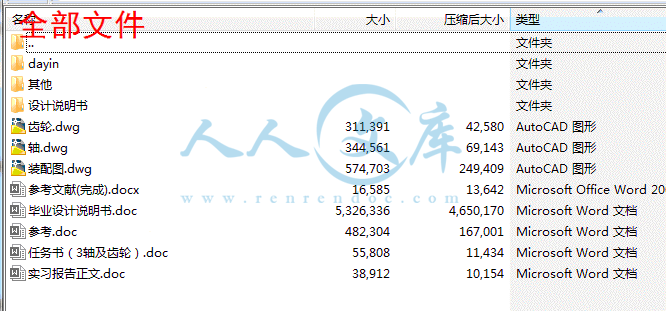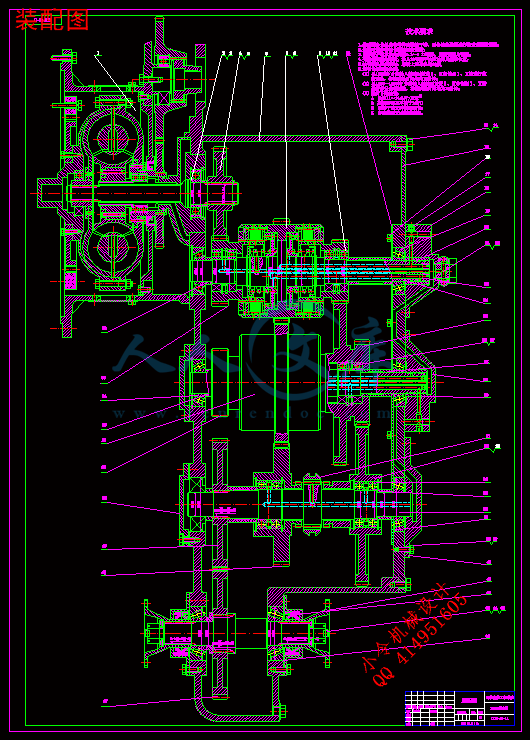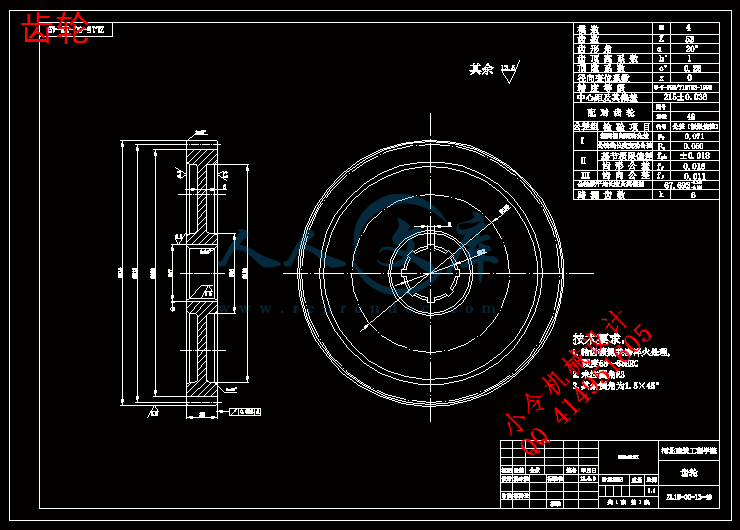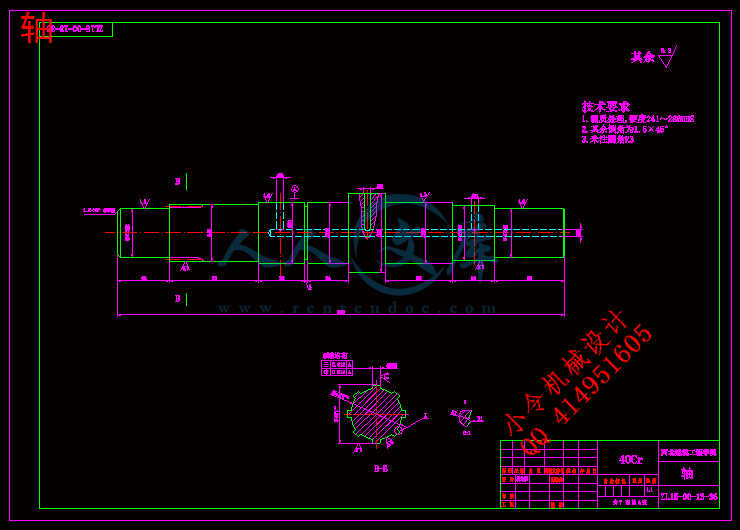【温馨提示】 购买原稿文件请充值后自助下载。
[全部文件] 那张截图中的文件为本资料所有内容,下载后即可获得。
预览截图请勿抄袭,原稿文件完整清晰,无水印,可编辑。
有疑问可以咨询QQ:414951605或1304139763
目录
摘 要......................................................................................................................I
Abstract.............................................................................................................II
第一章 绪 论...................................................................................................... 1
1.1 装载机简介 1
1.2 设计内容 1
1.3 装载机发展概况 2
第二章 装载机总体设计.......................................................................................3
2.1 装载机总体参数的确定 3
2.2 装载机的插入阻力与掘起阻力的确定 4
第三章 装载机工作装设置计...............................................................................6
3.1 工作装置的设计要求 6
3.1.1概述 6
3.1.2轮式装载机工作过程 7
3.1.3 轮式装载机工作装置设计要求 7
3.2 铲斗设计 8
3.2.1铲斗的结构形式 8
3.2.2铲斗的分类 9
3.2.3铲斗的设计要求 9
3.2.4铲斗设计 9
3.3 动臂设计 14
3.3.1对动臂的设计要求 14
3.3.2 动臂铰点位置的确定 14
3.3.3动臂长度的确定 16
3.3.4动臂结构和形状的确定 17
3.4 连杆机构的设计 18
3.4.1工作装置连杆机构的类型 18
3.4.2连杆机构的设计要求 20
3.4.3连杆机构尺寸参数设计及铰点位置确定 21
第四章 工作装置受力分析及强度计算.............................................................26
4.1 确定计算位置及典型工况 26
4.1.1计算位置的确定 26
4.1.2典型工况选取和外载荷的计算 26
4.2 工作装置受力分析 27
4.2.1对称载荷工况 27
4.2.2偏载工况 30
4.3 工作装置强度校核 31
4.3.1动臂 31
4.3.2铰销强度的校核 32
第五章 工作装置的建模及仿真分析.................................................................34
5.1 工作装置建模 34
5.1.1在Pro/E中建立铲斗 34
5.1.2启动ADAMS/View 程序 35
5.1.2检查和设置建模基本环境 35
5.1.3 Pro/E铲斗模型导入ADAMS 35
5.1.4工作装置的几何建模 36
5.1.5 创建约束及施加运动和载荷 38
5.2初步仿真分析该模型的性能参数 41
5.2.1铲斗后倾角及卸载角的测量 41
5.2.2分析…………………………………………………………………………………....43
第六章 结 论...................................................................................................44
参 考 文 献...........................................................................................................45
致 谢.............................................................................................................46
摘 要
装载机是一种用途较广的铲运、施工机械。它广泛用于公路、铁路、建筑、水电、港口和矿山等工程建设。装载机具有作业速度快、效率高、机动性好、操作轻便等优点,是现代机械化施工中不可缺少的装备之一。
ADAMS是一款虚拟样机技术软件,其强大的机械系统动态仿真技术大大简化了机械产品的设计过程,缩短了产品开发的周期和成本,明显提高了产品质量。应用ADAMS软件设计装载机,首先是虚拟样机模型的建模,然后是样机仿真,在本设计中,我们对工作装置设计计算和虚拟样机建模,使用ADAMS对其进行模拟仿真控制,而其工作装置用ProE进行了建模,可以根据设计者要求来进行调整,从而方便了设计者的不同需求。
关键词: 装载机;工作装置;ADAMS;仿真
Abstract
Loader is a broader use of scraper, construction machinery. It widely used in highway, railway, construction, utilities, ports and mines, and other construction projects. Loader is operating speed, high efficiency, good mobility, the advantages of operating the Light, lower costs of the project has played an important role in the construction of a modern mechanized equipment indispensable one.
ADAMS as a virtual prototyping software, its powerful dynamic mechanical system simulation technology greatly simplifies the mechanical product design process and shorten the product The development cycle and cost, significantly improved product quality. ADAMS application software design loaders, is the first virtual prototype model of modeling, simulation and prototype is in the design, We design and calculation of the working device and the virtual prototype modeling, the use of its ADAMS simulation control, and their work devices ProE a standard model, designers can adjust to demand, thus facilitating the different needs of the designers.
Keywords: Loader; Work-Equipment; ADAMS; Simulation
第一章 绪 论
1.1 装载机简介
装载机属于铲土运输机械类,是一种通过安装在前端一个完整的铲斗支承结构和连杆,随机器向前运动进行装载或挖掘,以及提升、运输和卸载的自行式履带或轮胎机械。它广泛用于公路、铁路、建筑、水电、港口和矿山等工程建设。装载机具有作业速度快、效率高、机动性好、操作轻便等优点,因此成为工程建设中土石方施工的主要机种之一,对于加快工程建设速度,减轻劳动强度,提高工程质量,降低工程成本都发挥着重要的作用,是现代机械化施工中不可缺少的装备之一。近年来,装载机的品种和产量在国内外都得到了迅猛的发展。此次的设计任务就是装载机的重要组成部分——工作装置。
图1-1 轮式装载机结构示意图
1—柴油发动机;2—液力变矩器;3—变速箱;4—前、后桥;5—车架铰链;
6—动臂提升油缸;7—转斗油缸;8—铲斗;9—驾驶室;11—滤清器
1.2 设计内容
ZL_50轮式装载机工作装置建模及仿真;工作装置选型设计;工作装置模型的建立;工作装置仿真分析是本次设计的主要内容。这次设计应用到虚拟样机技术软件ADAMS、PRO/E软件的建模。
设计时利用ADAMS、PRO/E等软件对轮式装载机工作装置进行设计和分析,可以快捷、高效、精确地解决许多设计上的难题,使设计的工作量减少,设计工作得到简化,设计效




 川公网安备: 51019002004831号
川公网安备: 51019002004831号